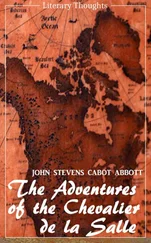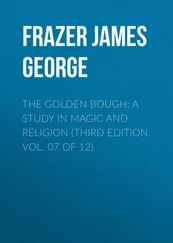1 ...6 7 8 10 11 12 ...17 Robert Hooke, born in 1627, was eight years younger than Boyle. He was born on the Isle of Wight, where his father was vicar of Freshwater. He soon showed an advanced ability in drawing and everything mechanical, but had to make his own way in the world at thirteen, following the death of his father. A small inheritance allowed him to become an apprentice to the painter Sir Peter Lely in London but Hooke soon decided that he had enough skill in that direction without the drudgery of apprenticeship. He entered Westminster School, where he demonstrated an amazing ability to master languages, learnt ‘the six books of Euclid in one week, mastered the organ in twenty lessons, and invented thirty ways of flying’. 23 He became an undergraduate at Christ Church College, Oxford, in 1653 where, essentially penniless, he was forced to earn his way as a servant to another student. Nevertheless, he soon made his abilities known to all the scientific luminaries of the age including Christopher Wren and Robert Boyle.
Boyle and Hooke made a superb team, with complementary skills and an equal commitment to the new-fangled Baconian idea that the truth could be found through direct observation and experiment. 24 During the twelve years they worked together at Oxford between 1656 and 1668, Boyle and Hooke’s ideas led in every direction. They became particularly famous for investigating the properties of air, which in classical and medieval times was one of the four ‘elements’ (air, earth, fire and water). Using their own version of the air pump that had been invented by Otto von Guernicke, they measured the elasticity of air and found the mathematically precise, inverse relationship between the volume and pressure of a body of air. This is one of the first physical laws to be enunciated and is still known today as Boyle’s law. Boyle’s air pump, built and operated by Hooke, was also intended to show that Aristotle was wrong when he taught that a vacuum was impossible in nature. Attached to their pump (which often broke down) was a glass chamber inside which they could create both high pressure and a (partial) vacuum. They proved that when the air was removed from the chamber, sound could not be transmitted, although light could. A whole mini-revolution was seeded by what might seem to us a very simple piece of apparatus when they also used it to conduct some elementary experiments on the effect of the air on living organisms, putting a bird or mouse into the chamber and evacuating the air. As it was withdrawn, the animal became listless; if the air was restored, it revived. If enough air was withdrawn, the creature died: all commonplace stuff to us, but revolutionary then. They had discovered that there must be some ‘vital essence’ in the air that makes life possible. This, and the eventual discovery of oxygen by Lavoisier, Joseph Priestley and others, launched an investigation into the material (physiological) basis of life itself, a subject with enormous metaphysical implications given that it had always been thought that life was something breathed into creatures by God, not just another property of matter in motion.
Linguist, microscopist, artist, mathematician, mechanical experimenter and inventor, palaeontologist, surveyor – Hooke’s accomplishments were long overshadowed by the fame of the two other geniuses (Boyle and Christopher Wren) with whom he worked. With Boyle he was the master experimenter and inventor – for example of the universal joint, essential to so many modern machines. 25 With Wren he was the great engineer. When Wren was made architect for the rebuilding of London after the Great Fire of 1666, Hooke was the chief surveyor; and as Hooke the engineer he gave Wren the parabolic formula for the great dome of St Paul’s Cathedral. 26
For a period after Boyle left Oxford, he continued to employ Hooke, who became the ‘curator of experiments’ for the Royal Society and therefore found himself (or made himself) for the rest of his life at the centre of every scientific discovery of the age. Sadly, few people seem really to have liked Hooke, whose childhood kyphosis steadily worsened so that as an adult he became a twisted hunchback. Something of a miser and a misanthrope, and never one to avoid a fight or to allow someone else to take credit for his own discoveries, he became extremely litigious. He contested bitterly with Christian Huygens over the invention of the spring-regulated mechanism that made a pocket watch (and thus Paley’s famous metaphor) possible, and he argued bitterly with Newton over optics and cosmology. When Newton took over from Hooke as President of the Royal Society, Hooke’s portrait mysteriously disappeared from the society’s rooms.
The combination of Newtonian mechanics, Baconian methods, and the new experimental empiricism that propelled eighteenth-century science was also reflected in the Industrial Revolution and is exemplified in the extraordinary career of William Paley’s contemporary, Erasmus Darwin (1731–1802). This Darwin, grandfather of Charles, was a successful doctor in the city of Lichfield and at the same time a member of the famous Lunar Society of the industrial Midlands. Darwin, Watt, Boulton, Wedgwood – all the great names of British inventiveness – met once a month and created a new kind of intellectual centre outside the universities. 27
Erasmus Darwin was not just a brilliant doctor, a trencherman (he weighed some eighteen stone) and sensualist (fathering fourteen children, at least two out of wedlock), he was also a remarkable inventor. Designs for steering mechanisms and sprung wheels for carriages, a steam-driven carriage, improvements to steam engines, a horizontal windmill, the canal lift, hydrogen balloons to carry mail, a clockwork-driven artificial bird, a copying machine, a turbine engine, a multi-mirrored telescope, a water closet, devices for improving gardening, new kinds of spinning machines – all flowed from his pen. Furthermore, he was also a poet and radical philosopher who used his poetry, tending to the epic in style and volume, as the vehicle for his most dangerous ideas.
One of the themes of Erasmus Darwin’s immensely popular works concerned what we now call evolution, a subject more commonly associated with his grandson. Like so many of his century, Erasmus Darwin was fascinated by fossils and the extraordinary record they presented of life and death over the ages. Darwin saw that they were evidence of the life and death of legions of organisms never seen alive by man: extinct forms about which the Bible is totally silent. Fossils were evidence of a whole ancient world waiting for scientific explanation. Without knowing how much time might have been involved, and ignoring the biblical narrative of creation, Erasmus Darwin proclaimed a world of gradual change over the aeons; change from simple creatures to more complex; life arising out of chemistry, driven by the forces of the environment:
Earths from each sun with quick explosion burst,
And second planets issued from the first.
Then, whilst the sea at their coeval birth,
Surge over surge, involv’d the shoreless earth, Nurs’d by warm sun-beams in primeval caves,
Organic life began beneath the waves …
Hence without parent by spontaneous birth
Rise the first specks of animated earth. 28
‘Without parent’! No amount of argument could make that idea compatible with ‘God the father’ and the most honoured of all words in the Old Testament, the first verses in Genesis, which state that God created the world exactly as we know it, in six days. Erasmus Darwin had issued a challenge in the style of a dictum of Descartes, who had once said: ‘The nature of physical things is much more easily conceived when they are beheld coming gradually into existence, than when they are only considered as produced at once in a finished and perfect state.’ Other scholars in France and England shared this vision of a changing world, but ‘gradual’ and ‘chemistry’ were not in the Church lexicon. Paley read Erasmus Darwin, recoiled, and reached for his pen.
Читать дальше












